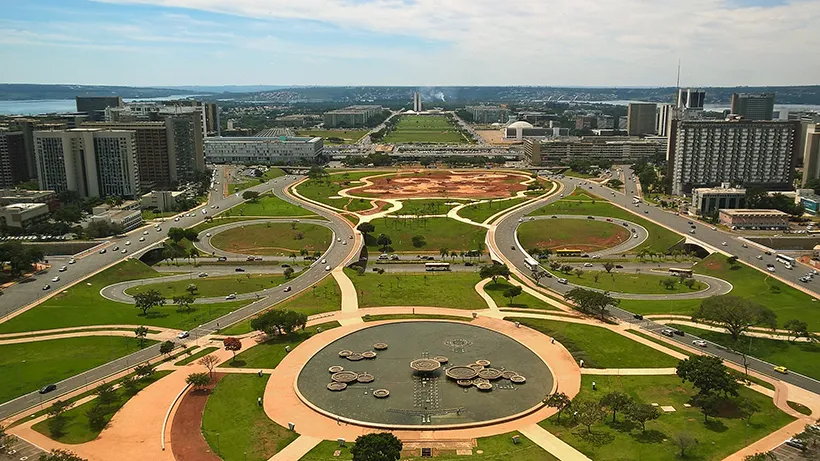The South American giant is ready for new growth

Finnish companies’ business deals with Brazil are traditionally very large. SMEs also have good export prospects.
The tunes of the samba, Brazil’s national dance, are gradually turning from a minor key to a major key. The economy of the country with the world’s fifth largest population and area has emerged from the worst recession of its history. In 2015, the economy shrank by nearly four per cent, and last year was not much better.
- Brazil has traditionally been a strong exporter of raw materials, but both the recession sparked by the global downturn and the political crisis have shaken the business environment in recent years. Modest growth is finally expected for this year, and more growth is predicted for next year, says Mika Relander, Senior Adviser responsible for Latin America at Finnvera.
What’s more, statistics support Relander’s view. Brazil’s gross domestic product turned positive early this year. According to Relander, protectionism and bureaucracy still hold sway and issues related to corruption are in the public eye, but attitudes to free trade are gradually becoming more favourable. At the same time, the United States is going in a different direction.
- Brazil has a huge internal market, and domestic demand has traditionally been the engine for economic growth. Demand has suffered slightly as unemployment has risen, but there has been a turn for the better even in that respect.
Brazil has long been Finland’s most important trading partner in South America. Individual contracts are very large in monetary terms. Finnish exports to Brazil have mainly been machines and equipment for heavy industry, various chemicals and fertilisers. The country also offers enormous opportunities for the exports of SMEs.
Relander points out that, with regard to Finnvera’s export credit guarantee exposure, Brazil is still among the three countries with the highest political risks.
- Demand for guarantees is continuous and fairly extensive, even though it has been quieter than before in the pulp and telecommunications sectors. Investments in Brazil’s infrastructure are expected to pick up in the coming years. This will create opportunities for Finnish exporters, says Relander.
Growth keeps Valmet in Brazil
The developing economy attracted Valmet to Brazil over 50 years ago.
Valmet’s current focus in Brazil is on pulp production technologies and the associated automation and service solutions.
During the past five years, Valmet has delivered two large pulp mills to Brazil. The value of the deliveries has been hundreds of millions of euros. In addition, Valmet has established service business in the region. At present, the company has about 500 employees in Brazil, divided among five locations.
Bertel Karlstedt, President of Pulp and Energy at Valmet, says that Brazil’s economy and political system are much less stable than those in Europe.
- The instability naturally has an impact on us and our customers. Brazil has had periods of strong growth, for instance from 2002 to 2011. On the other hand, the country has also gone through periods of recession, like those of the past couple of years. The business environment is still attractive to us, as we operate on global markets and seek growth in developing regions.
Karlstedt says that much of the pulp produced by their customers is exported.
- Our customers’ investments and profitability of business are largely dependent on global markets. The pulp mills built in Brazil during a period of over ten years have been among the world’s largest.
According to Karlstedt, Brazil’s annual inflation has recently been around six per cent. However, in 2015 inflation exceeded ten per cent.
- High inflation affects both wages and various supply contracts.
Brazil has not been the easiest possible operating environment for Valmet. Competition among pulp technology suppliers is very stiff.
- Valmet is one of the leading players in Brazil, but new competitors are also entering the market. We have developed both our own local production and production with a partner network. We must act in this way so that we can ensure competitiveness and, on the other hand, can pay import duties and taxes.
Karlstedt remarks that the Brazilian administration has striven to steer production into the country by means of import duties and taxes.
- There is pressure to dismantle duties. The internal situation in the country may also drive things to another direction.
In Karlstedt’s opinion, a company planning to locate in Brazil should also be prepared for the fact that companies in Brazil bear social responsibility by investing in charity, especially in the company’s own operating area.
- Valmet gives significant support to local charity organisations, such as Instituto Ayrton Senna and Instituto Ecofuturo. The goal of the programmes supported is to promote basic education and environmental protection. In addition, we have donated old computers to a school and collected funds for a daycare centre.
FACT: Brazil
- The country category determined by Finnvera for Brazil’s credit quality is 5/7 (questionable credit quality).
- Gross domestic product: About EUR 1,603 billion (2015). Finland’s gross domestic product is EUR 207 billion (2015).
- Gross domestic product per capita: EUR 7,838 (2015). Finland’s gross domestic product per capita is EUR 37,827 (2015).
- Economic growth: -3.6% (2016). The growth expected for this year is 0.6 per cent.
- Inflation: 10.7% (2015).
- Exports: EUR 170 billion (2015).
- Imports: EUR 152 billion (2015). The total value of Finnish exports to Brazil in 2016 was about EUR 381 million.
- Principal sectors: agriculture, mining industry and pulp industry.
- Currency: Brazilian Real: The exchange rate is EUR 1 to BRL 3.3.
Links:
Country classification and map
Sources: Ministry for Foreign Affairs, Focus Economics, Finnish Customs
Main photo: Mika Relander, Finnvera
